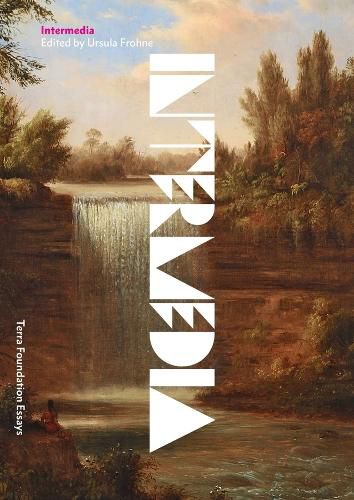Readings Newsletter
Become a Readings Member to make your shopping experience even easier.
Sign in or sign up for free!
You’re not far away from qualifying for FREE standard shipping within Australia
You’ve qualified for FREE standard shipping within Australia
The cart is loading…






The history of innovative intermedia art practices in America.
In 1965, American artist and Fluxus cofounder Dick Higgins stated that much of the best art being made at the time fell between media. He linked the dismantling of divisions among media to decompartmentalization in society and the impending dawn of a classless society. After high art, he wrote, came the deluge brought on by Marcel Duchamp’s ready-mades, Robert Rauschenberg’s combines, and Alan Kaprow’s happenings. Intermedia, the term Higgins selected to describe this trend, referred to works of art that fuse different, often nontraditional, media. In intermedia, boundaries between mediums dissolve and new mediums emerge. Never a prescriptive term, intermedia remains fluid, both as an artistic practice and an art historical category.
The essays in this volume consider a range of subjects from nineteenth- and twentieth-century American art and visual culture, exploring instances of intermedia within specific cultural, social, and historical contexts and in relation to theories of media, image-making, and materiality. They present a rich account of American artistic practice as an open system of medial interrelation and exchange, highlighting experimental cross-pollinations and mutations among artistic forms.
$9.00 standard shipping within Australia
FREE standard shipping within Australia for orders over $100.00
Express & International shipping calculated at checkout
The history of innovative intermedia art practices in America.
In 1965, American artist and Fluxus cofounder Dick Higgins stated that much of the best art being made at the time fell between media. He linked the dismantling of divisions among media to decompartmentalization in society and the impending dawn of a classless society. After high art, he wrote, came the deluge brought on by Marcel Duchamp’s ready-mades, Robert Rauschenberg’s combines, and Alan Kaprow’s happenings. Intermedia, the term Higgins selected to describe this trend, referred to works of art that fuse different, often nontraditional, media. In intermedia, boundaries between mediums dissolve and new mediums emerge. Never a prescriptive term, intermedia remains fluid, both as an artistic practice and an art historical category.
The essays in this volume consider a range of subjects from nineteenth- and twentieth-century American art and visual culture, exploring instances of intermedia within specific cultural, social, and historical contexts and in relation to theories of media, image-making, and materiality. They present a rich account of American artistic practice as an open system of medial interrelation and exchange, highlighting experimental cross-pollinations and mutations among artistic forms.